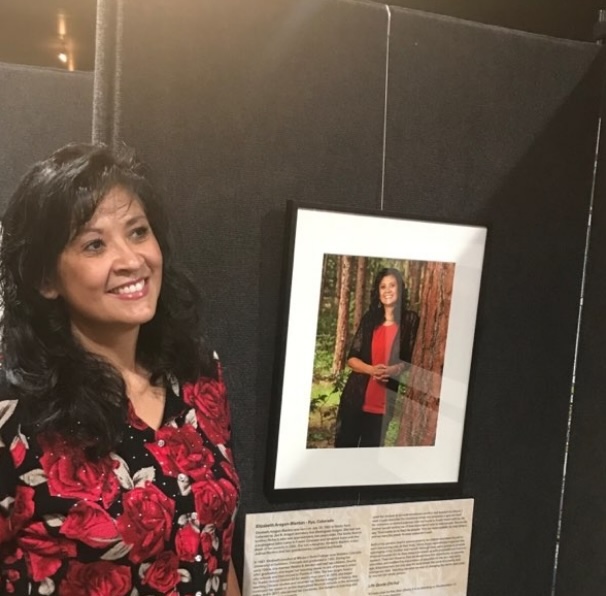There are a lot of Coloradans who may not even know about the town of Fowler. But, with the exception of a single census, this Arkansas Valley hamlet has been on a steady growth trajectory for decades. Of course, no one knows what exactly happened in the 1920 census that caused a decline in population to 922, but ever since, it’s been on the upswing. Today, Fowler sits at something north of 1,253 full-time residents. Yes. It’s small.

Fowler, named for Orson Squire Fowler, perhaps one of the 19th century’s most famous phrenologists—a person who studies contours of the head to measure intelligence—it is also the hometown of arguably the only Ph.D. to ever graduate from the town’s high school. That person is long time educator Dr. Elizabeth Aragon-Blanton, now the Director of Education at the El Pueblo Museum in Pueblo, Colorado.
Like many Latinos who call Colorado home, Aragon-Blanton’s family came from northern New Mexico and southern Colorado. “My mother’s family came from Mora, New Mexico,” she said in a recent phone interview from Pagosa Springs where she and her own family were on vacation. That side of the family did fieldwork. Her father’s side worked in the mines and in the then thriving lumber industry around Trinidad. Somehow, she said, everyone ended up in Fowler and, more specifically, smack dab in the heart of the town’s colonia, the poor side of town, known colloquially as ‘Tortilla Flats.’
Living modestly had little effect on the family’s home life. It was a nurturing environment, she said. Her father, Joe, was a city worker whose job included tending Fowler’s cemetery. “He kept it beautiful,” she remembered. The cemetery was also a sanctuary where she often accompanied him. While he worked, she walked the grounds reading the headstones. She also remembered her father explaining why there were two sides of the cemetery, one side adorned with headstones, the other with wooden crosses. “He said it was segregated.”
Her mother, Mary, she said, was a homemaker who also worked at the town’s tomato factory and also did house cleaning. But living modestly, Aragon-Blanton said, did nothing to deter either her regular escape into books or her desire to learn. These two things were her oxygen and, luckily for her, her mother recognized it.
One thing Aragon-Blanton remembered about her mother was that despite the family not having a lot of disposable income, she “would always set aside money to buy me books.” Learning, both as a child and all through her school days, paid off handsomely. It earned her “a four-year scholarship to Western State College,” now Western State University in Gunnison. There, she double majored in history and communications and theater. She would later earn a doctorate.
Aragon-Blanton began her teaching career at Denver’s Lake Middle School where she taught, among other things, Chicano studies, for two years. She remembered on her first day at Lake, a janitor warned here, “You’re going to hate it here.” It turned out just the opposite. “It was hard, but I loved it.”
She might have stayed longer in Denver, but her father got sick and she and her husband, also a Fowler native, moved back to Pueblo. For the majority of the next three decades, she has taught all across Pueblo’s District 60, including two stints at the middle school level and later at Pueblo South and later Pueblo Central.
“Some people want to be an astronaut, some ballerinas,” said Aragon-Blanton. “I knew I was going to be a teacher when I was three or four years old.” She said she ‘played teacher’ in her family’s garage, using sheetrock as her chalkboard. “I’ve always wanted to give something back to this world.” Teaching provided that opportunity.
Being a lifelong reader evolved into Aragon-Blanton becoming a researcher. That, in turn, transformed her into a writer. For years now, including researching and writing her thesis for her Ph.D., she’s been writing curricula for the classes she teaches and for teachers who use her work. Her rule of thumb, if you’re going to do research, you might as well write it.
Now, as Director of Education at southern Colorado’s El Pueblo Museum, Aragon-Blanton said she isn’t shackled by the constraints of an often rigid and sometimes immovable public school system.
She said when she accepted the museum position, she was given the freedom to build her own teaching model for teaching young kids. That promise, she said, has made the job even more rewarding.
Now, six months into the job, Aragon-Blanton is putting her fingerprints on a curriculum involving science, technology, research, engineering, the arts and math. “My goal is to reduce the academic achievement gap in the summers. So many of our kids lose so much knowledge.” Also, she said, kids love the challenge and the encouragement that comes from teaching. “They just want someone to love ‘em.”
Aragon-Blanton confesses that she’s a ‘hand-on’ teacher—literally. “I spend so much of my time holding little hands, encouraging and teaching.” Her approach, she said, pays off regularly when she’s out across the city.
“I can’t go anywhere where I don’t have students who don’t remember me, come up and talk to me or come up and show me their families,” she says in a voice exuding affection. “I’m so glad that they have happy memories of me. I just live for that.”





